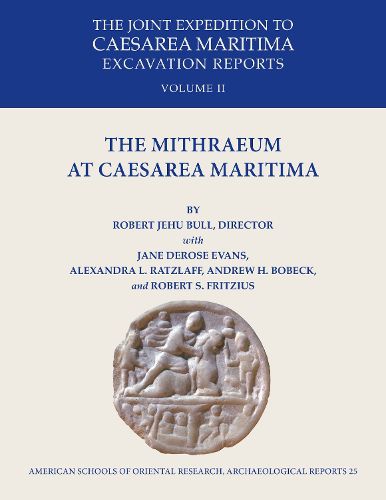Readings Newsletter
Become a Readings Member to make your shopping experience even easier.
Sign in or sign up for free!
You’re not far away from qualifying for FREE standard shipping within Australia
You’ve qualified for FREE standard shipping within Australia
The cart is loading…






Robert J. Bull began the excavation of a vault on the south side of the Inner Harbour of Caesarea Maritima, Israel. The vault was one of a row of warehouses built to store goods unloaded from the harbour built by Herod the Great.
Begins with an introduction to the excavation process; the study of the stratigraphy (analysis of the order and position of layers of archaeological remains) considers the later excavations of the adjoining vault, and includes new photographs, plans, and section drawings. The original construction phase, the vault’s transformation into a Mithraeum (a sanctuary or temple of the god Mithras), abandonment, and final use as a charnel house are discussed in detail.
Also, includes detailed studies of the fragmentary wall paintings depicting Mithraic iconography, and of the medallion found inside the vault, in the context of the practices of Mithraism in the ancient world. The reconstruction of the ceiling splay and the interpretation in terms of astrological symbolism important to Mithraism are also detailed.
A second volume describing the structure of the vault and the material culture found is planned.
$9.00 standard shipping within Australia
FREE standard shipping within Australia for orders over $100.00
Express & International shipping calculated at checkout
Robert J. Bull began the excavation of a vault on the south side of the Inner Harbour of Caesarea Maritima, Israel. The vault was one of a row of warehouses built to store goods unloaded from the harbour built by Herod the Great.
Begins with an introduction to the excavation process; the study of the stratigraphy (analysis of the order and position of layers of archaeological remains) considers the later excavations of the adjoining vault, and includes new photographs, plans, and section drawings. The original construction phase, the vault’s transformation into a Mithraeum (a sanctuary or temple of the god Mithras), abandonment, and final use as a charnel house are discussed in detail.
Also, includes detailed studies of the fragmentary wall paintings depicting Mithraic iconography, and of the medallion found inside the vault, in the context of the practices of Mithraism in the ancient world. The reconstruction of the ceiling splay and the interpretation in terms of astrological symbolism important to Mithraism are also detailed.
A second volume describing the structure of the vault and the material culture found is planned.